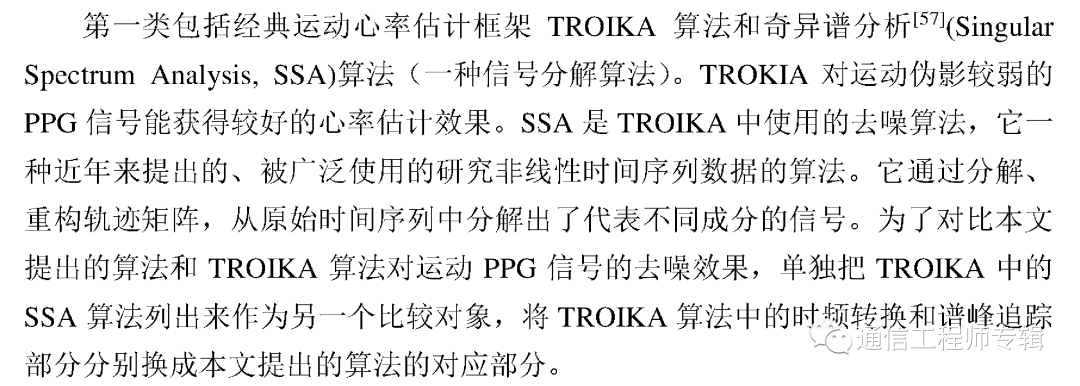

LMS算法结合时域心率检测程序内容
描述
继续讲解本人优化心率算法的过程!在完成LMS算法后,对运动下的PPG信号如何去噪有了较深的总结!此时需要理论的加持,这样印象才能深刻。这也是学习循序渐进的方式!目前有三类去噪的方式!

有关TROIKA算法的论文已经被我下载了!
一起看看本人的分析过程!
文章提及在运动状态下,用FFT得到的周期谱图会有一些缺点!在matlab中,函数periodogram是用来计算信号的功率谱密度。怎么用呢?举例说明!该函数和FFT函数的作用是有一定联系的!
Fs=1000; % 采样频率
n=0:1/Fs:1;
x=cos(2*pi*40*n)+3*cos(2*pi*100*n)+randn(size(n));
nfft=1024;
window=boxcar(length(n));
[Pxx,f]=periodogram(x,window,nfft,Fs);
P=10*log10(Pxx);
plot(f,P);
hold on;
Pxx_1=abs(fft(x,nfft)).^2/length(n);
Due tothe leakage effect, the spectral peak associated with the HR cannot be separated from the peak associated with the handswing rhythm. Thus an error in HR estimation could occur.
Compared to nonparametric spectrum estimation methods such as Periodogram, the SSR-based(sparse signal reconstruction) spectrum estimationfeatures high spectrum resolution, low estimation variance, andincreased robustness. Compared to conventional line spectralestimation methods, the SSR-based spectrum estimation doesnot require model selection and has improved estimationperformance.
此时引出了稀疏信号重建算法!Since MA contaminated PPG signals may not have sparse/compressivespectra, SSR needs preprocessing to sparsify the spectra.
由于还有其他原因,因此需要通过多个步骤来完成心率谱峰的检测,从而引出了TROIKA架构!
a satisfactory framework forHR monitoring during intensive exercise should consists ofthree parts: denoising, high-resolution spectrum estimation,and spectral peak tracking (including peak selection and verifification). Thus we propose the TROIKA framework.
后续系列文章里面会继续分析该框架!
再看第二类和第三类!
LMS算法就是第三类算法!

等到自己写好LMS算法的滤波程序后,急不可耐的开始观察各时间段信号的频谱(就因为这个急导致写错了语句)!连续观察六段信号!每段时常40秒。观察的过程也是算法逐渐完善的过程。有了理论基础,如何一步一步的实现呢?必须配合实际数据的仿真结果,然后在其中寻找规律!本文下半部分给出了LMS算法结合时域心率检测的程序内容!
责任编辑:haq
-
变步长LMS自适应滤波算法及其分析2010-04-26 3555
-
求lms算法的程序2012-05-02 3332
-
基于matlab的LMS算法实用小程序2012-09-05 8098
-
求助!如何使用labview编写 VS_LMS 算法自适应陷波器2015-04-01 4588
-
有人会LMS算法的编程程序么2017-05-25 3257
-
自适应LMS算法的C语言实时处理实现方法2019-05-21 2544
-
Matlab-LMS算法演示2021-08-17 1986
-
基于分形可变步长LMS算法的海杂波中微弱目标检测2010-02-09 799
-
新的变步长LMS算法及DSP设计2010-05-14 2938
-
基于FPGA的定点LMS算法的实现讲解2021-04-28 999
-
基于FPGA的自适应LMS算法的实现2021-05-28 1069
-
智能手环计算心率的算法程序2021-10-29 9794
-
程序中如何实现滤波、峰值检测和心率计算2021-11-01 3413
-
信号处理仿真LMS算法结合频域检测心率值程序2021-11-16 2309
-
浮点LMS算法的FPGA实现2023-12-21 1587
全部0条评论

快来发表一下你的评论吧 !

